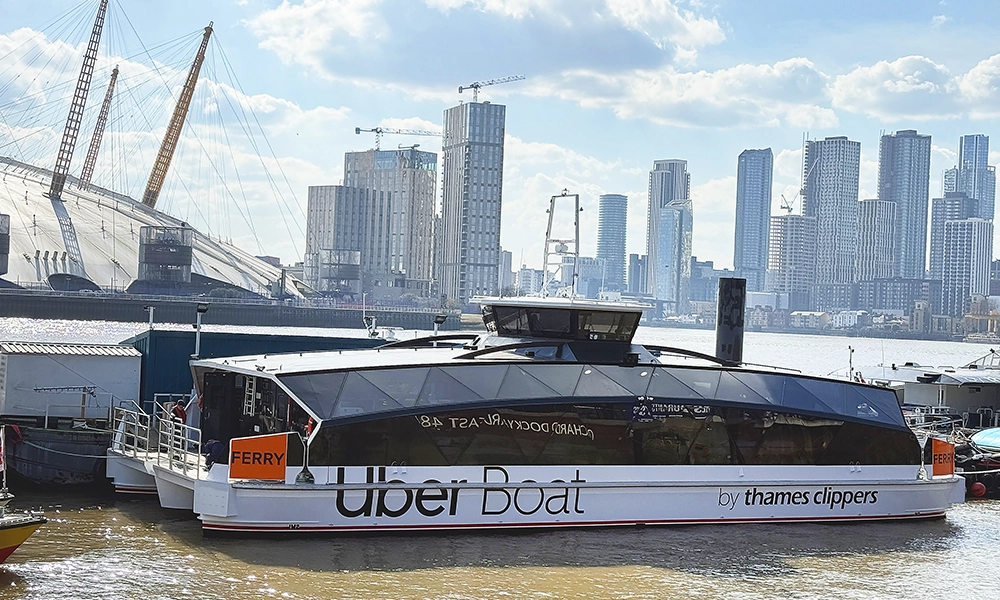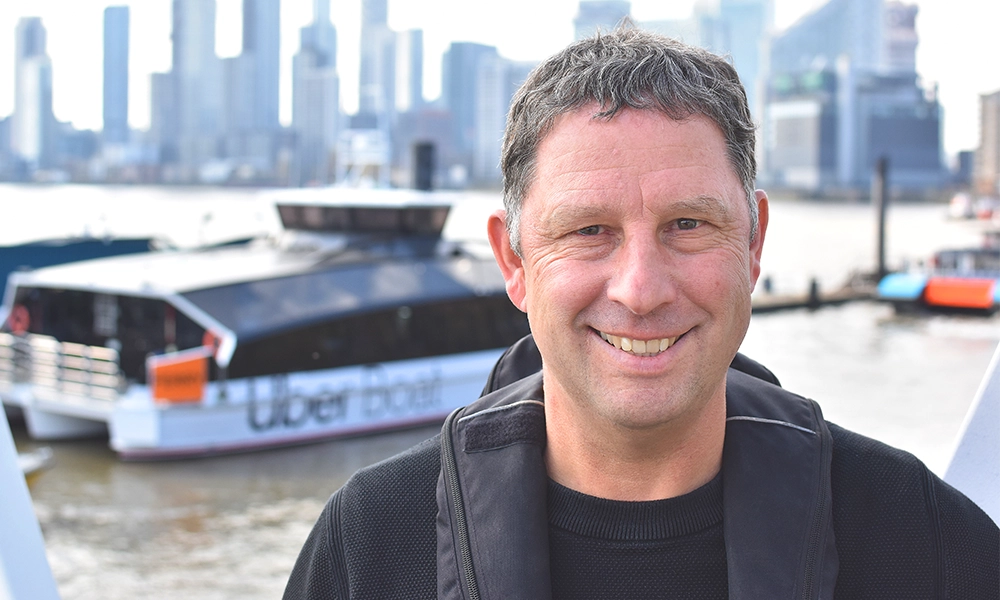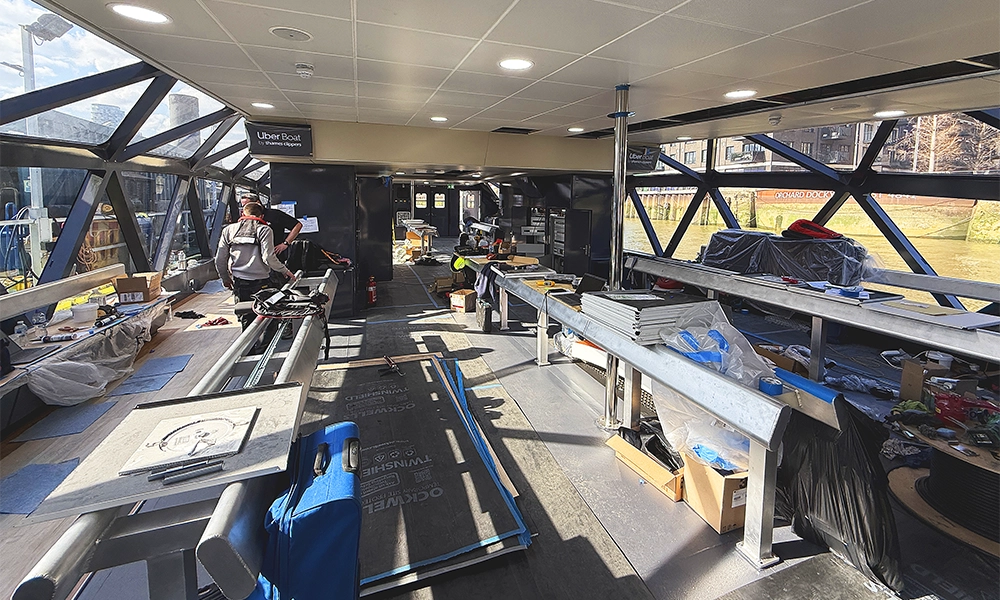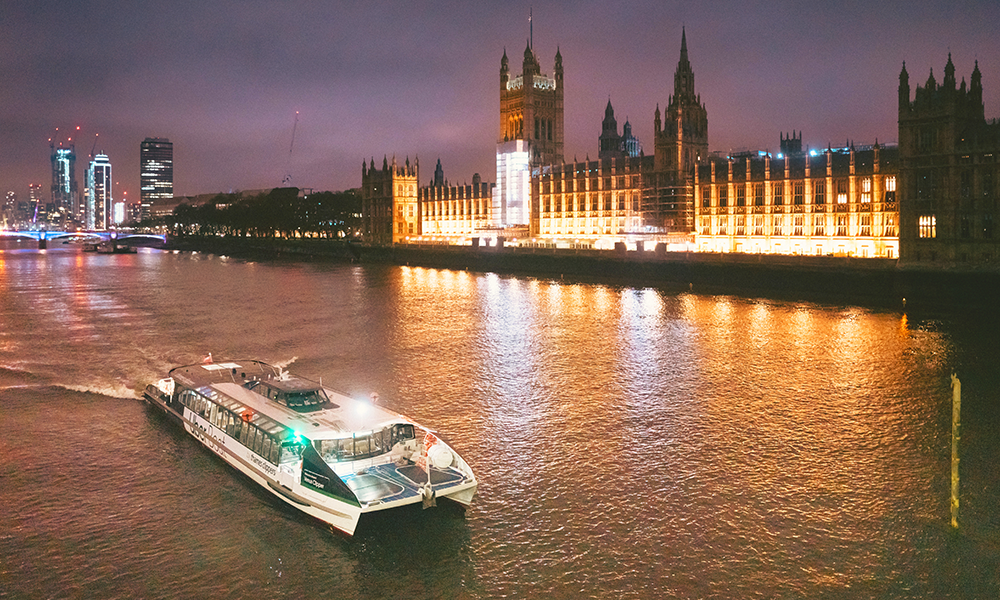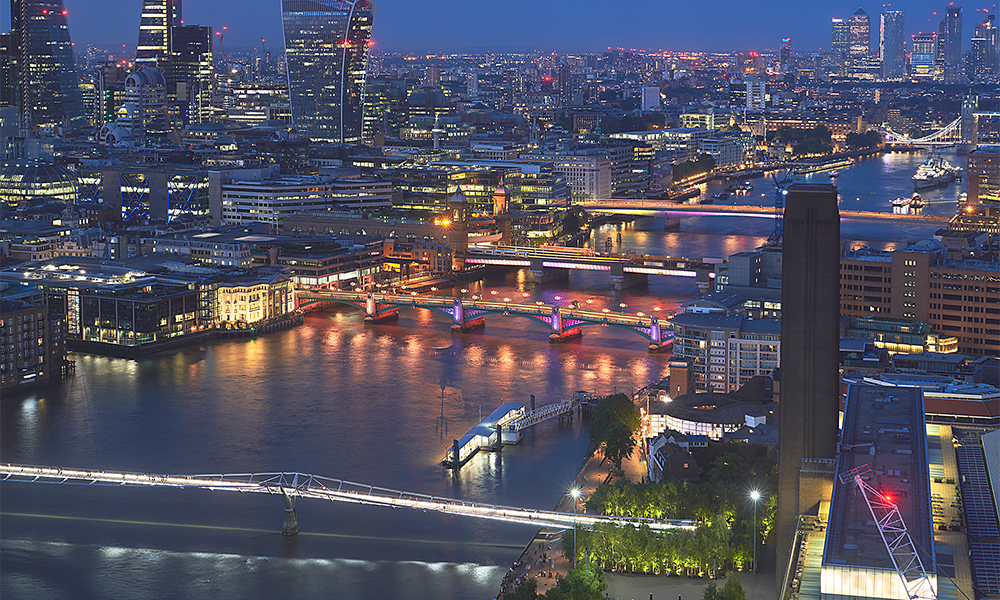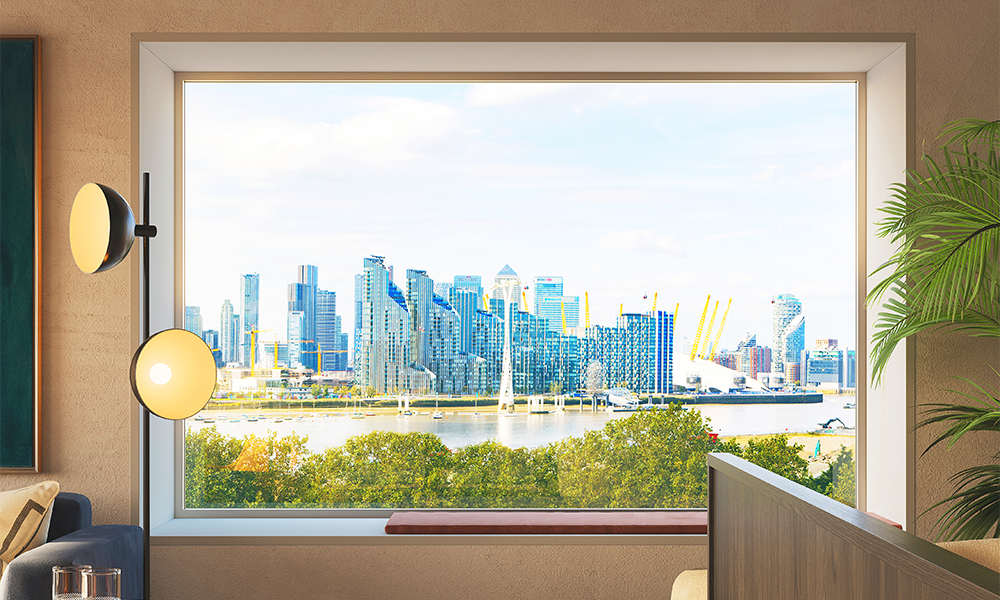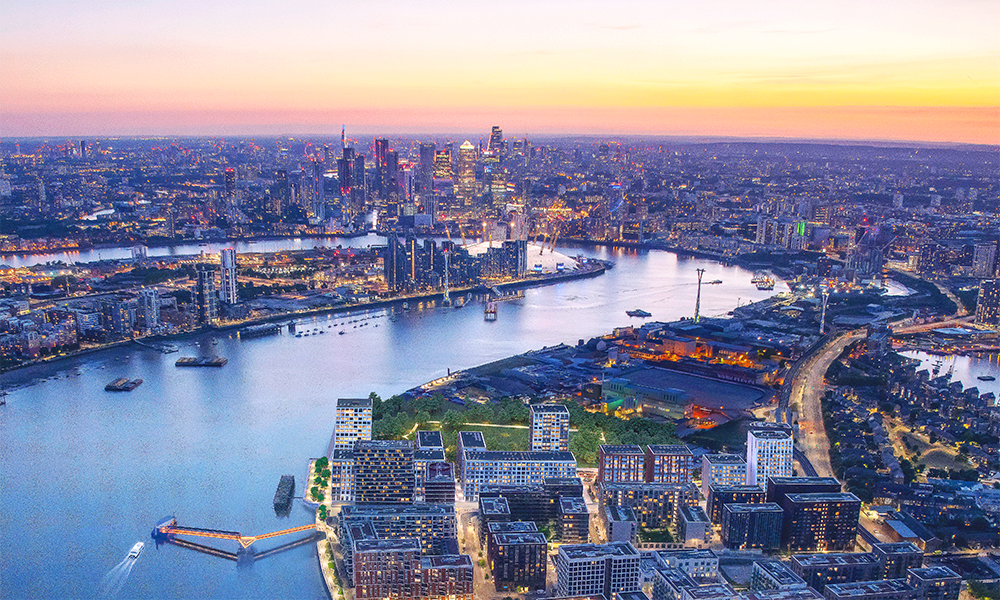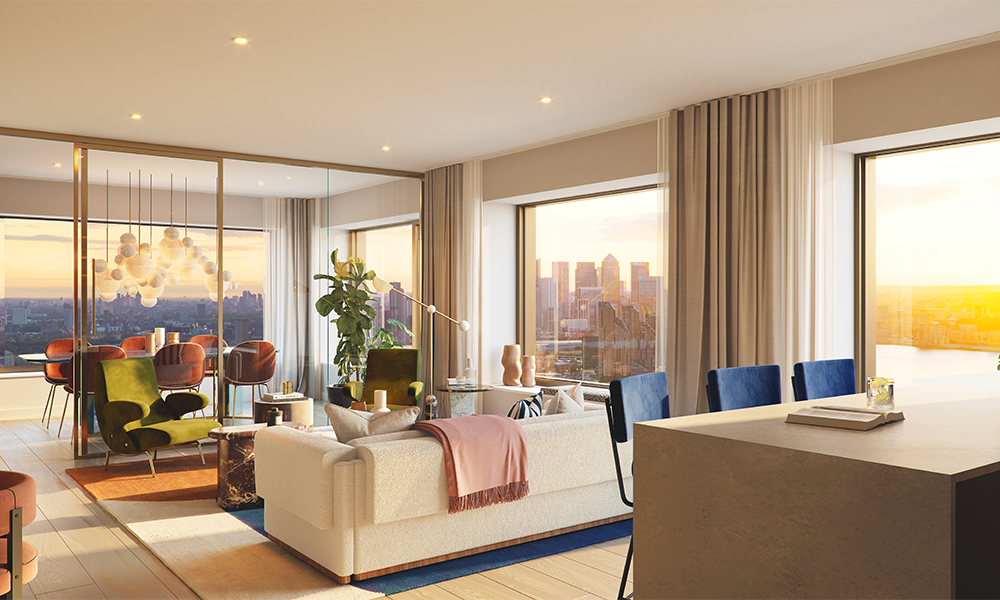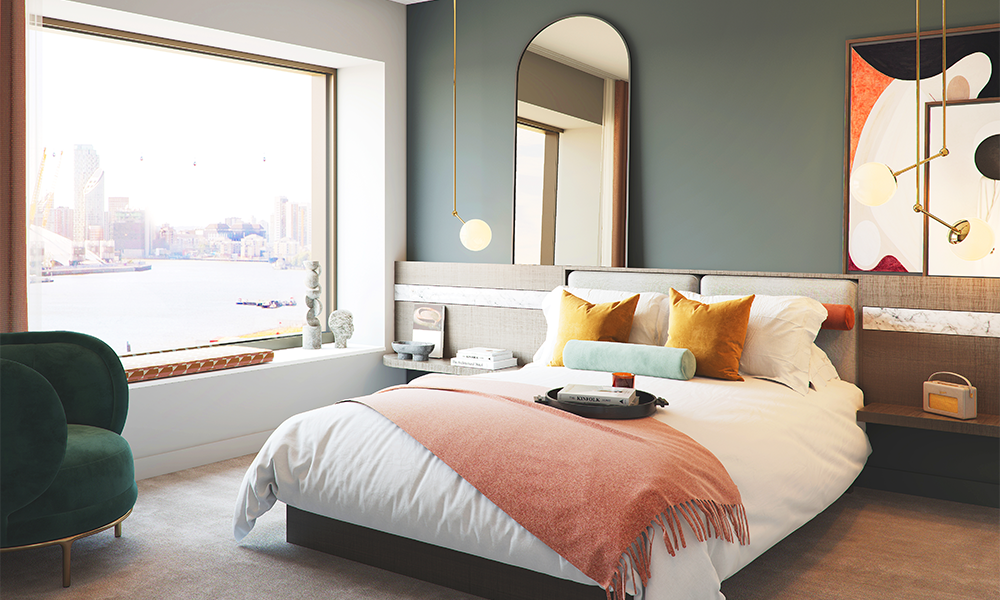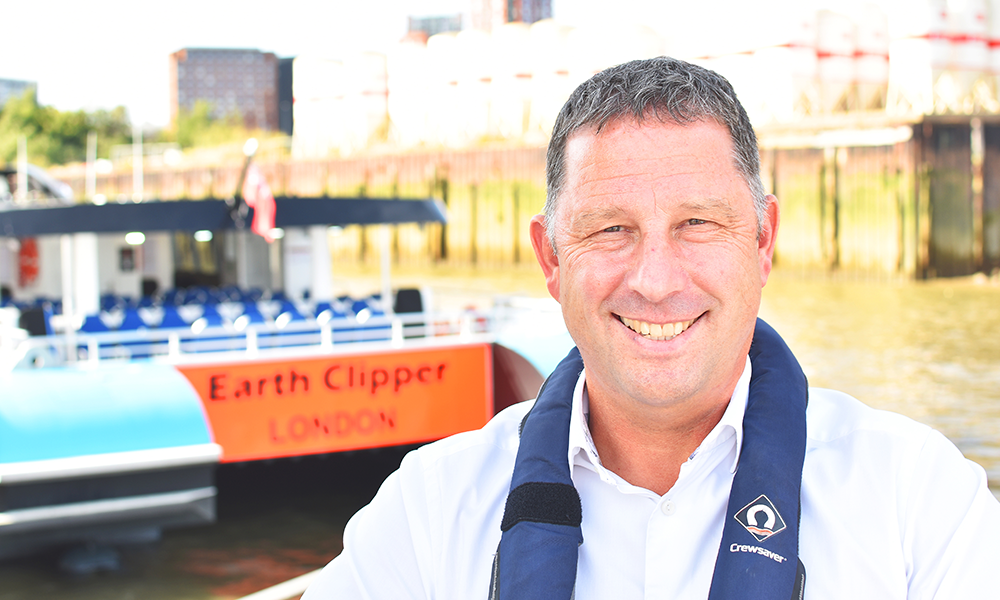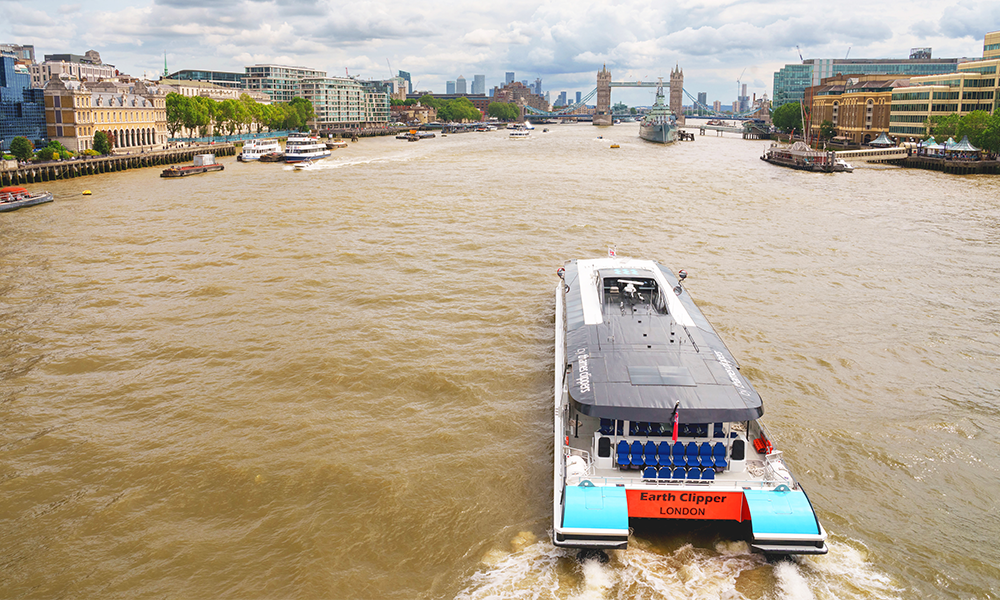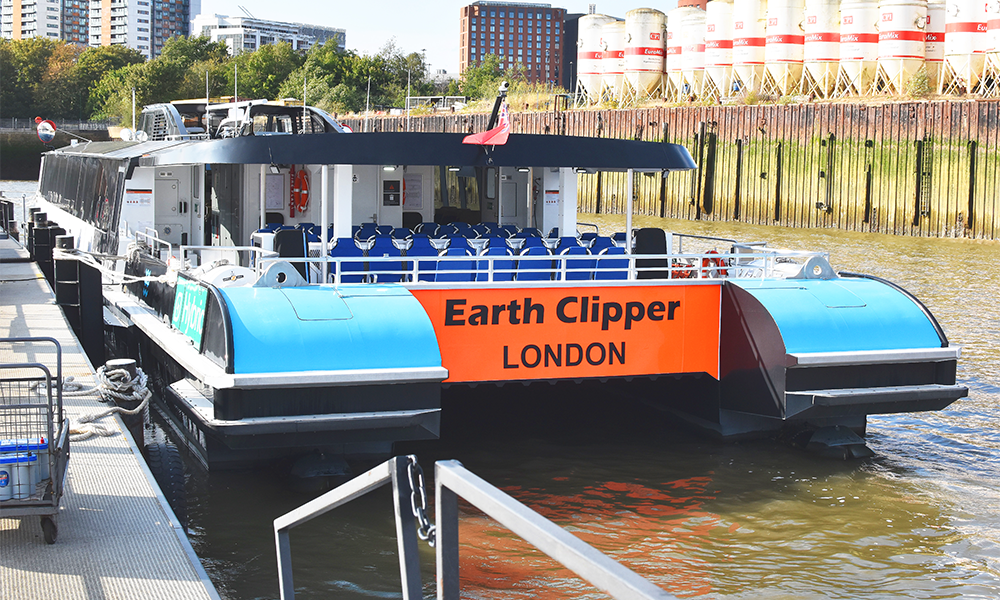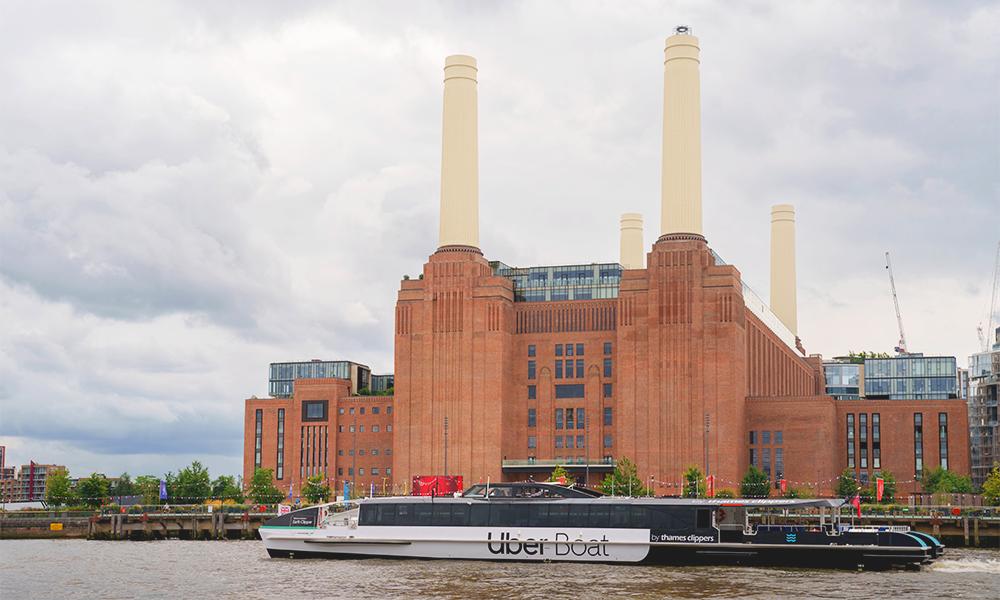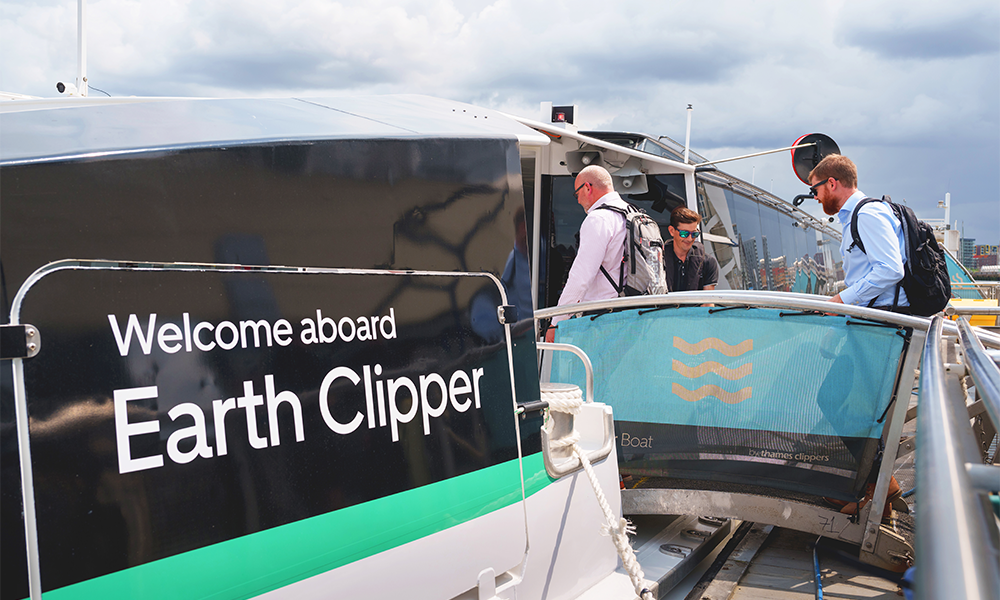All-electric vessel can carry up to 100 bikes and 150 passengers as Uber Boat By Thames Clippers service begins its phased introduction
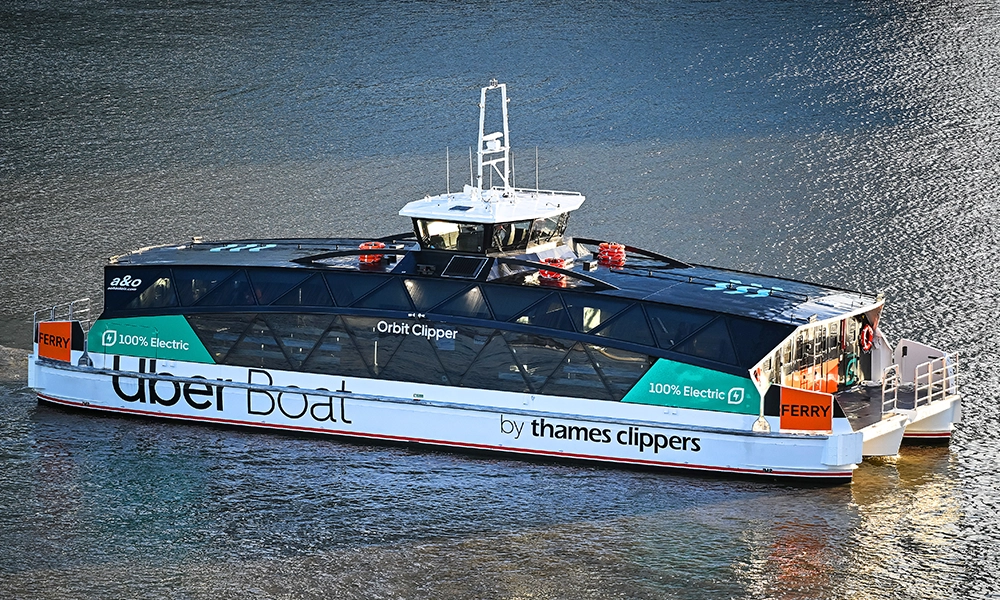
Subscribe to our free Wharf Whispers newsletter here
The sleek, aquadynamic shapes of Uber Boat By Thames Clippers’ fleet have long lent London’s river a futuristic look.
Their low-profile white livery is an aesthetic more similar to advanced aircraft and sci-fi spacecraft than lumbering tugs on the water.
They look like they’re built for speed to the point where seeing them manoeuvre gently into position at a pier is something of visual paradox.
It’s impossible to be sure, but the company’s preference for such designs might well have played a part in its success in delivering fast river bus services where others had failed before.
Just seeing one of its vessels blast past at full speed is to want to board.
There’s a thrill there, a real excitement, as clouds of spray kick up behind.
While the latest addition to the fleet is a different animal altogether, its design is also a tantalising prospect for passengers.
Orbit Clipper, officially unveiled in December 2025, carries a cargo of innovation atop her twin hulls.
Built to ferry passengers between Canary Wharf and Rotherhithe, she’s being phased into operation alongside outgoing vessel Twinstar, which has spent more than five decades carrying people across various bits of the Thames.
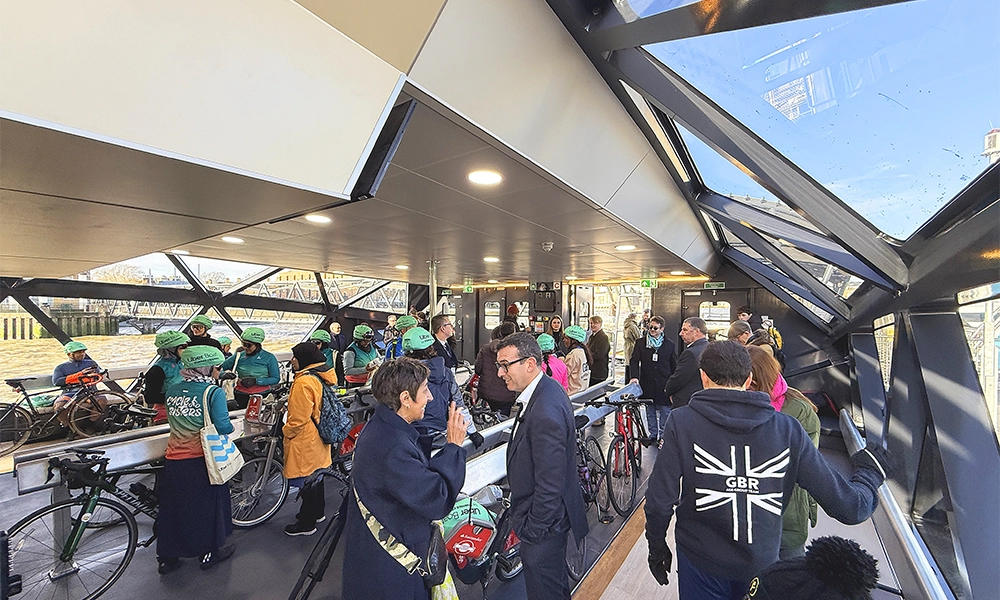
a massive increase in capacity
While the older boat could take up to 120 people and maximum of five bikes, Orbit has space for 150 as well as up to 100 bicycles.
Tardis-like she seems considerably bigger inside, with an intelligent roll-on, roll-off design for efficient boarding and disembarkation once safely across.
Generously glazed at the sides, passengers sit or stand beside large triangular windows that let light and views flood in.
In short, stylistically she’s a vessel well realised to serve a pier adjacent to the site that is set to be filled by the largest office tower in the UK – JP Morgan Chase’s new riverside tower.
Orbit is well cast for the future too. She’s the UK’s first fully electric, zero-emissions ferry with aluminium used to make her lighter.
The project has seen Thames Clippers work with Wight Shipyard Company, marine civil engineering consultant, Beckett Rankine, and electrical infrastructure specialist Aqua Superpower.
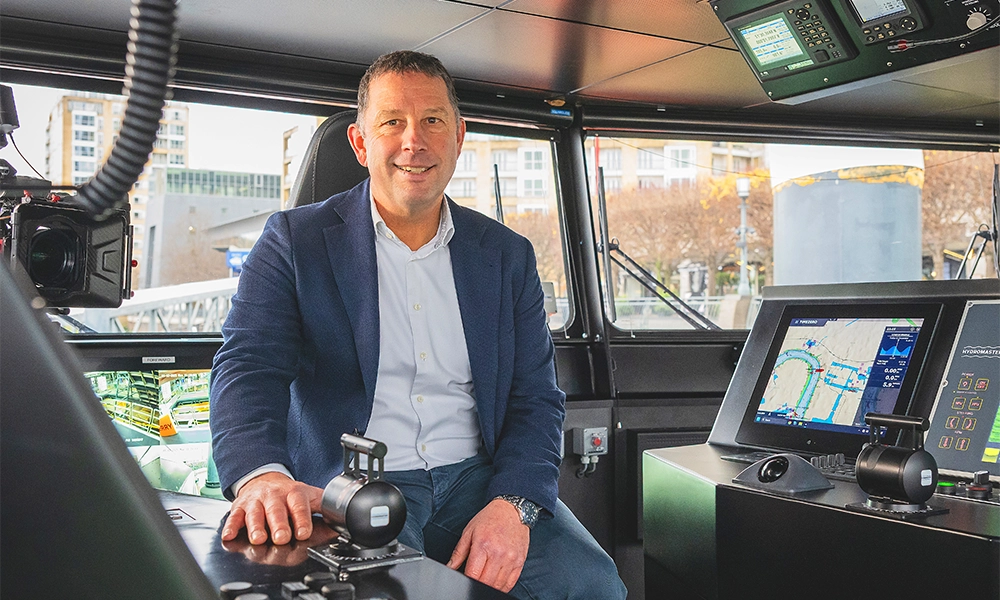
creating opportunity
Uber Boat By Thames Clippers CEO and co-founder, Sean Collins, said: “It’s been a remarkable journey – it hasn’t been easy – but innovation never is.
“The team has embraced this project, nobody’s given up – we always believed it would be delivered and here we are.
“Watching Orbit crossing feels brilliant – she fits in so well with the architecture of Canary Wharf.
“We believe there’s a real opportunity here to further develop this concept and implement it at other locations along the Thames Estuary.
“Sometimes people living by the river feel disadvantaged because they have to go back inland to make a crossing.
“The Thames can be seen as a barrier and it shouldn’t be. Instead, we should be connecting our communities across it.
“Orbit Clipper not only showcases cutting-edge innovation but also sets a new standard for eco-friendly travel on the Thames, helping to shape a cleaner, greener future for Londoners and visitors alike “

an emphasis on cycle routes
At Orbit’s unveiling, attended by Mayor Of London, Sir Sadiq Khan, and representatives from Uber, Innovate UK and other stakeholders in the project, there was a clear emphasis on the new craft supporting those travelling by bike.
A group of cyclists from British Triathlon wheeled their mounts on and off the vessel as a practical demonstration of the way it allows travel between major routes such as Cycle Superhighway 3 and Quietway 1.
“This is a fantastic new transport option for Londoners – not only cleaner and greener than its predecessor, but providing quicker and more accessible journeys across the river for far more people,” said Sadiq.
“Innovation and investment in travel infrastructure like this will help us navigate the challenges facing our environment and our economy as we continue building a fairer, greener, better London for everyone.”
Ruth Daniels, CEO at British Triathlon, added: “With space for up to 100 bikes, Orbit Clipper gives triathletes, commuters, tourists and anyone traveling across London a greener, a more convenient way to get around.
“The ability to integrate river bus services into their routine adds a welcome, sustainable alternative.”
Hers was a sentiment echoed by Uber UK general manager Andrew Brem. He said:
“By boat, bike or car, Londoners now have even more options to take a zero-emission journey across the capital with Uber.
“Whether you’re commuting to work or enjoying the sights of the city, the Orbit Clipper is a brilliant addition to the Thames and is an important milestone in the electrification of London’s transport options.”
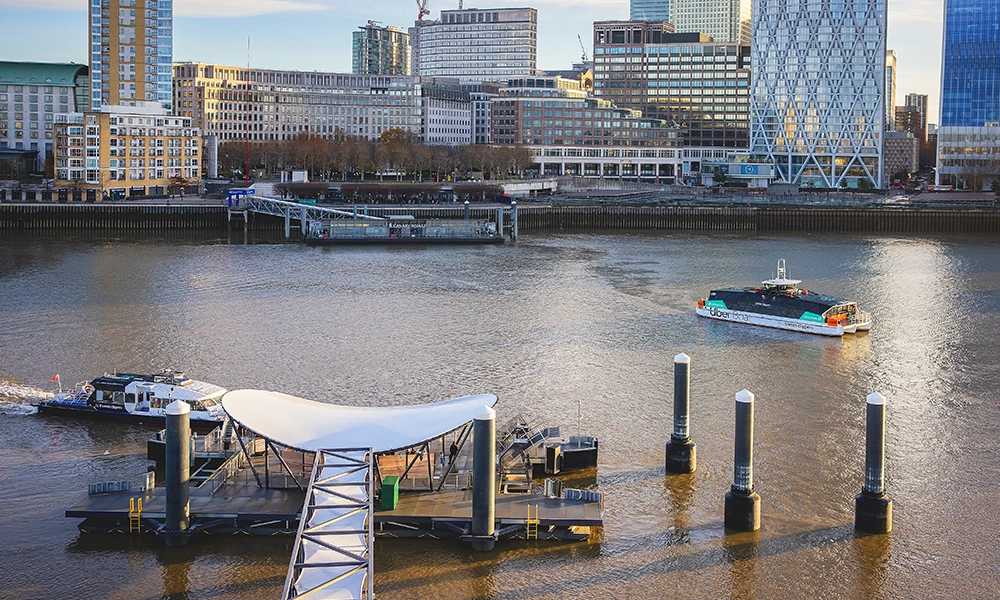
zero emission running
The introduction of the new vessel also marks an important step in Thames Clippers’ mission to cut its carbon emissions by 50% by 2035.
The company is already operating three hybrid high-speed passenger vessels – Earth, Celestial and Mars.
These operate on battery power in central London to reduce emissions and biofuel elsewhere to recharge the boats’ power.
Orbit is being introduced gradually to ensure service continuity.
She is expected to be in full service by spring 2026.
Plans to have her self-dock at either end of her journey are currently on hold due to delays in supply and installation of the necessary systems.
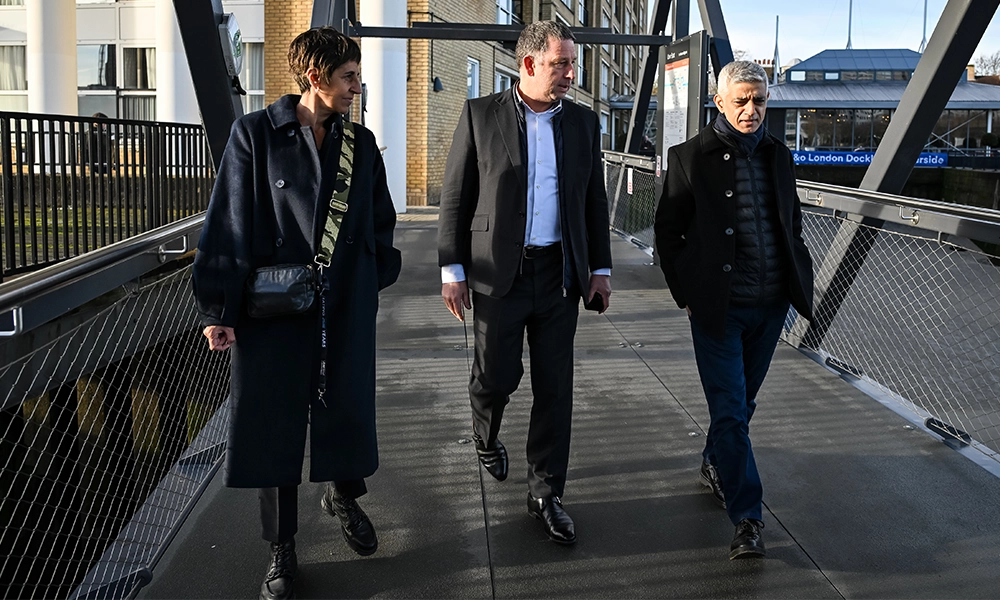
key details: Orbit Clipper
Orbit Clipper has begun a phased introduction to Uber Boat By Thames Clippers’ RB4 ferry service between Rotherhithe and Canary Wharf.
Single journeys on Oyster or via the Uber or Thames Clippers Tickets apps cost £4.10.
Passengers can buy a carnet of 20 tickets for £57.40 on the apps, reducing a single fare to £2.87.
The journey takes approximately three minutes.
Find out more about the service here
Read more: Why a degree in hospitality and tourism can boost your career




